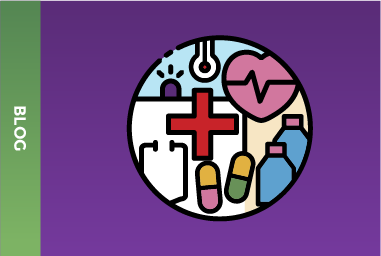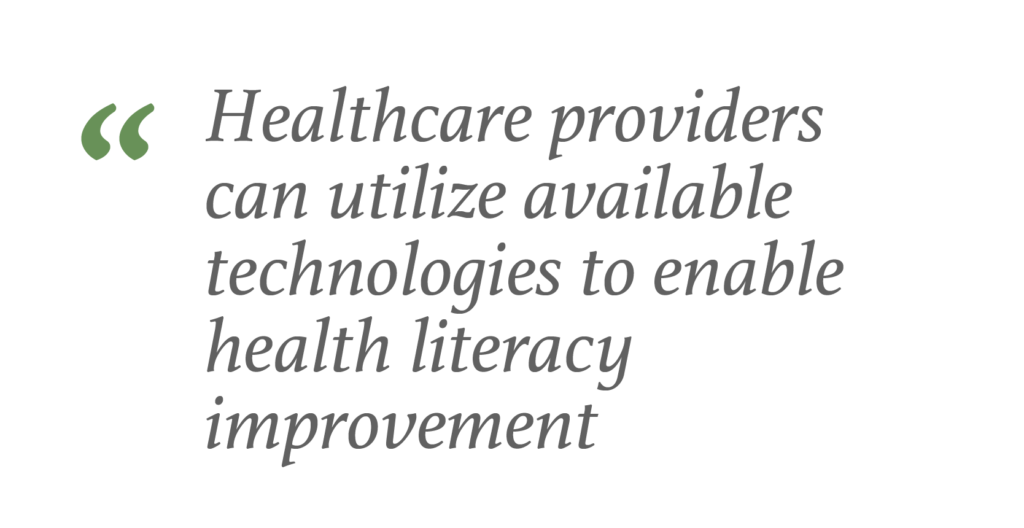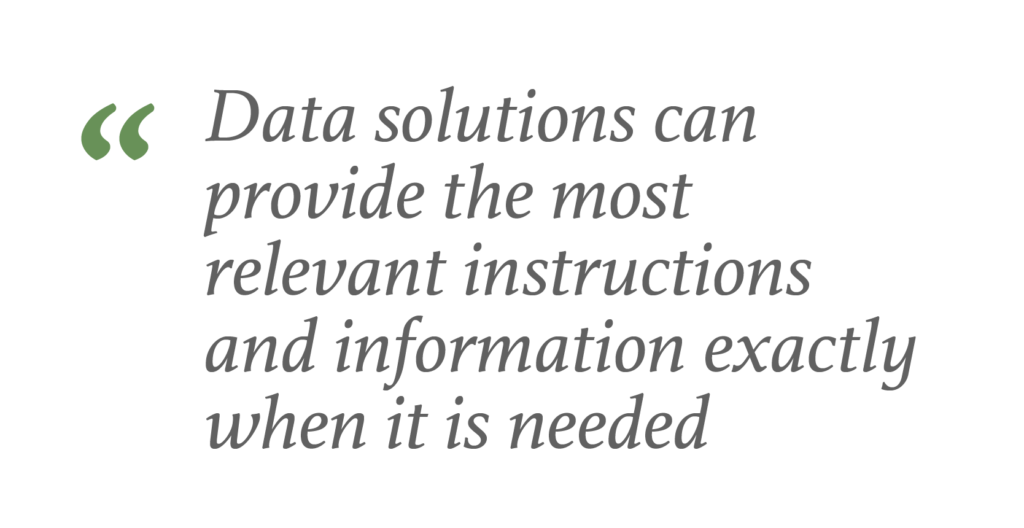How Can Data Help to Educate Patients and Improve Medical Literacy?

It’s a fact the world has a health literacy problem. In the United States, just 23,3% of adults have proficient health literacy. This means nearly 4 out of 5 adults lack the necessary skills to not only prevent disease but to manage their health. That results in higher rates of chronic illnesses, poor self-care, preventable hospitalizations, less frequent use of preventive services, etc. Today, having access to the Internet and high technologies, patients can improve their medical literacy and, in turn, providers can help them with that. In this article, I want to highlight:
- What is health literacy?
- Why is it important?
- How can data help to educate patients?
What Is Health Literacy?
The definition of health literacy was updated in August 2020 straight after the release of the U.S. government’s Healthy People 2030 initiative. Now it reads as: “It’s the degree to which individuals have the capacity to find, obtain, process, understand, and use basic health information and services needed to make well-informed health decisions and actions for themselves and others.”
Why Is Medical Literacy Important?
Health literacy affects everyone every day. You can overlook the fact that low medical literacy affects the quality of your life in total, but it’s the fact. Every one of us, at some point in life, needs to be able to access, understand, and use the information and services to address a health issue correctly.

As outlined by the Centers for Disease Control and Prevention, proficient medical literacy skills are important, because if they are poor, they lead to:
- Not asking for treatment in time
- Taking medication incorrectly
- Neglecting a diet that can provoke a retrogression
- Experiencing poor treatment outcomes
- Needing treatment and other services to a greater extent
Data for Improving Patients’ Health Literacy
Nearly 90% of Americans have access to and use the Internet and about 81% own a smartphone. Evidently, today almost every American has access to the Internet and all the information available there. That’s why they are better informed. However, there is a huge downside to consider. Doing research, people can get confused if they don’t have enough knowledge about their illness/treatment/symptoms.
Thus, the low literacy level of the patients combined with heaps of conflicting data can lead to the wrong decisions, panic, self-medicating and other problems that can affect the outcome, harm a patient’s health, and make matters worse. Thus, the education of patients plays an important role so that people are able to use the information found on the Internet properly.

With unlimited access to the internet and various gadgets, organizations have tons of opportunities for the improvement of health literacy. So, healthcare providers can utilize available technologies to enable health literacy improvement:
- To connect with the patients more effectively
- To get access to critical health information of the patients (test results, treatment instructions, etc.)
- To assess and treat underserved patient populations
- To offer patients multiple options for learning about or managing health issues
- To track the treatment and/or recovery of the patients in different parts of the world, etc.
With that in mind, medical literacy should be an integral focal point for healthcare organizations to close gaps between delivering insights and acting on them, which will result in accelerated outcome improvement. The complete lifecycle of medical literacy consists of four core elements:
- Data quality: capture and integrate
- Information utilization: grant access and deliver insight
- Literacy: deliver insights and act upon them
- Assessment of the insights value: track on the results and outcomes
Healthcare organizations that provide care services (hospitals, rehab centers, providers of wearables or mHealth apps, etc.) should invest in an integrative baseline architecture in which data starts to come together into one place. That enables users (patients and clinicians) to start utilizing data more efficiently.
For traditional settings, it can be instructions shared with a patient on the upcoming treatment or lab experience. It can be support for in-house patients, telling how surgery rehab goes; it can be a post-discharge pack of info and many more. In the United States, discharge programs include pre-recorded educational videos and materials that can be shared with relatives to help them interpret symptoms and suggest possible actions and alarm signs. In addition to this type of information on a patient portal, the doctor can record a short session of the last visit that has person-specific notes and recommendations.
For all types of innovative solutions, such as VR and HC devices, they can bring tons of value, from simple user guidance explaining the science behind the whole thing to individual specific programs and advice on supplementary services.

Data solutions can provide the most relevant instructions and information exactly when it is needed: before the admission or outpatient visit until discharge and throughout the ongoing supportive health care. It’s because they support the utilization of high-quality data to drive insights with confidence. What’s more, various tools integrated help organizations gather, process, and analyze the data to measure the current level of patients’ literacy and then develop the strategy of improvement.
Here is a sample of how the data solutions can improve medical literacy that includes:
- Accessing and requesting all the needed data
- Interpreting or using the information to drive improvement
- Conducting educational sessions and tests to check if the patient learned, understood and remembered the materials
What Else Can Organizations Do to Educate Patients Better?
Still, patients can face health literacy issues because they:
- Aren’t familiar with medical terms or how their bodies work
- Have to interpret statistics, evaluate risks/benefits that affect their health and safety
- Are diagnosed with a serious illness and are scared/confused
- Have health conditions that require complicated and/or specialized self-care
That’s why by implementing the high technologies and data solutions, healthcare providers can improve health literacy among patient populations by:
- Creating a welcoming environment. The lack of trust in health-care providers is one of the barriers to proficient health literacy for patients. There are a lot of reasons why people can feel uncomfortable communicating about health-related issues with clinicians (cultural differences, gender, language and so on). Different chatbots and apps can help create a more welcoming and private environment so that patients will feel more comfortable to share more information, ask/answer questions and so on. Besides, there are doctors’ surveys (that have an effect on star ratings) at the end of the day that include questions if treatment and medication was explained during the visit. Due to the fact that doctor visits are pretty fast, this part can be missed or addressed too quickly. Modern technologies can help with that as well, so that patients get the full information needed.
- Using visual aids and other printed information. It’s an effective way to relay crucial information to patients. The brain processes visuals 60,000 times faster than text. So, visual aids, infographics, images, graphics, diagrams, videos and other meaningful and captioned visuals can help patients better understand and even remember important health information. Besides, they are perfect tools for reinforcing written/verbal health communication. Educational videos are great, but some tech-forward clinics go even further and offer patients VR experience before the procedure that explains everything that will happen during the treatment, therefore decreasing much of their anxiety.
- Using plain language. It’s a challenge for patients to understand the nuances of health-related issues because of the medical terms. It’s better to use the simplest possible language when explaining a problem and/or delivering instructions. This is where various AI and CUIs can be extremely useful. They can define technical and/or medical terms and translate them to simple language, so that people understand the most important information. Companies need to analyze search data to understand how their patients ask questions and what is important to them, and then reflect this in their educational materials.
- Speaking at a measured pace. It’s crucial not to hurry during conversations, because patients will likely miss some important details. So, speak at a slow and measured pace; emphasize the most important points. Conversational assistant solutions can store the conversation and even compose a note for the patient based on it. It eliminates the risks of the patient forgetting crucial details.
- Asking and encouraging questions. Clinicians can check whether the patient understands the important information and/or instructions by asking questions. Also, they can encourage the patients to ask questions to reveal the gaps in understanding and/or knowledge that can be problematic or lead to a negative outcome. In this case, the providers can implement various reminders for doctors and educational programs based on patient data feedback, as well as integrate innovative AI conversational intelligence used in telehealth solutions that catch if questions were asked. Intelligent chatbots are some of the most used solutions on the market right now for encouraging an honest and clear patient-doctor conversation.
Takeaways
A poor medical literacy level can have various negative effects on a patient’s health and the care that they receive. So, improvement of health literacy can help patients:
- Prevent health problems
- Protect health by understanding when treatment is needed
- Make well-informed decisions on future treatment
- Better manage the problems and unexpected situations that can happen
- Better understand how to take care of some health issues that affect their entire life
- Comprehend and follow the instructions on a medication bottle
- Determine dosage information on over-the-counter medications
- Understand how food labels relate to dietary restrictions and other aspects that increase the chances of getting a positive health outcome
Data can help you deliver the right information in the right format to the right person. It helps you understand what works and what does not in a patient literacy program. It’s not only about doing surveys with patients, but also analysis of how the shared materials are used and how the usage correlates with the care outcomes. When it comes to healthcare organizations, improvement of the patients’ medical literacy will decrease the rates of admission and inefficient use of specialized hospital services that are designed for more critical patient care, because people will utilize preventative health services. And, as a result, it will lead to reduced healthcare costs.
Want to know more? Top 5 handpicked healthcare industry insights, cases, and business recommendations in your inbox every two weeks. Hit the SUBSCRIBE button below to learn about health tech with our digest!
Lets talk about how GreenM can help you implement the right data strategy to deliver the right info to the right people.
HOW TO BUILD SCALABLE SUBSCRIPTION SERVICE IN 2 MONTHS?
Learn how to replace an old subscriptions product, so a new one must have the same features and non-functional characteristics.
References:






